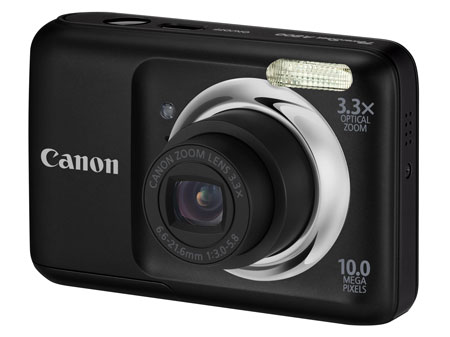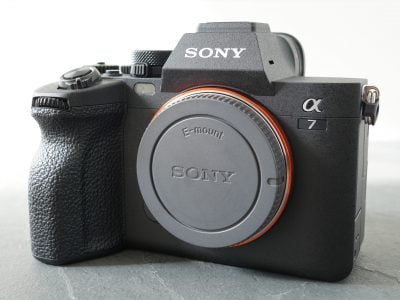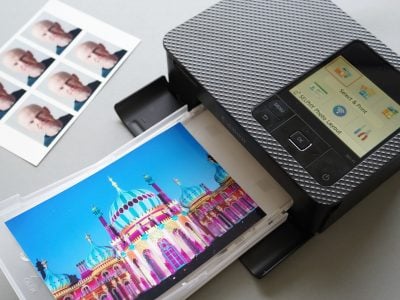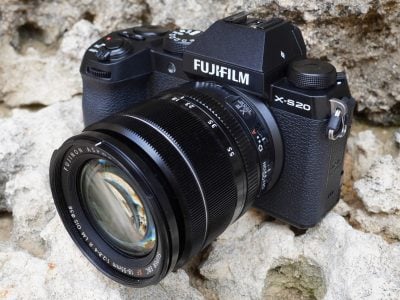Canon PowerShot A800
-
-
Written by Gordon Laing
Verdict
The Canon PowerShot A800 is a 10 Megapixel budget compact with a 3.3x optical zoom lens starting at 37mm (equivalent) and a 2.5 inch LCD screen. It’s the entry level A-Series PowerShot, replacing the A490 and A495 which were launched a year earlier
The PowerShot A800 lacks Canon’s optical image stabilisation found on more expensive models, instead it offers a Blur reduction scene mode which shoots reduced resolution images measuring 1600 x 1200 pixels. And, like its predecessors it can shoot video at VGA (640 x 480) resolution.
The PowerShot A800 is equipped with many of Canon’s consumer-friendly features including Smart Auto mode with scene recognition, face detection, and face self-timer functions. In Program auto mode it also provides a good degree of control over settings like exposure compenstion, ISO sensitivity, whilte balance and metering modes. Essentially though, it’s a budget point and shoot compact aimed at those looking for a compact that’s inexpensive and easy to use.
 |
Compared to Canon PowerShot A1200
Having substituted one model for two at the entry point of the A series, Canon has made it much easier to decide on the right budget compact. The A800 represents great value for money, but for a little extra outlay, the Powershot A1200 offers more right across the board.
First up, there’s an extra 2 Megapixels on the PowerShot A1200’s 12.1 megapixel sensor, but this is only going to do you any good if you plan to make big prints and, as we saw in our quality tests, the higher resolution sensor doesn’t actually deliver better quality images – on the contrary, the PowerShot A800 wins that contest hands down.
The PowerShot A1200 has a lens with a slightly broader 4x zoom and, crucially, that extra range is all at the wide angle end where it really makes a difference. If you like to shoot interiors, panoramic landscapes and large groups this is a very important difference between the two models. The A1200 also has a marginally larger and more detailed screen at 2.7 inches than the A800, but our experience was that this made little difference in practice. What could prove really useful under bright conditions though is the presence of an optical viewfinder – a rarity on today’s compacts.
Lastly, if you plan on shooting a lot of video, the PowerShot A1200’s 720p HD format is a big step up from the A800’s 640 x 480 VGA best resolution. Indeed the presence of HD video and a wider zoom, not to mention a bigger, more detailed screen and optical viewfinder will swing it for most people even if the image quality isn’t quite as good as the A800.
See our Canon PowerShot A1200 review for more details.
Compared to Nikon COOLPIX L24
Like the Canon PowerShot A1200, the Nikon COOLPIX L24 is a little bit more expensive than the PowerShot A800, but offers more across the board.
With the COOLPIX L24 the most apparent difference is the big 3 inch LCD screen. Unlike the 2.7 inch screen of the PowerShot A1200, though, the step up from 2.5 to 3 inches makes a big difference to the handling of the camera. The L24’s screen is bright and punchy and composing shots as well as playing back is a real pleasure on this compact.
The COOLPIX L24’s zoom lens has a very similiar, though not identical range to the PowerShot A800’s with a slightly longer reach at the telephoto end. Neither camera has image stabilisation, though the L24’s Electronic Vibration Reduction system which post-processes images to reduce camera shake works on full resolution images, whereas Canon’s Blur Reduction scene mode is restricted to 2M (1600 x 1200) images. Neither can compete with active stabilisation though, be it optical or sensor-shift.
The COOLPIX L24 is very much a point and shoot model and lacks many of the adjustments and options on the PowerShot A800. You can’t, for example, set the ISO sensitivity manually, nor change the focus or metering modes, and it also lacks the A800’s versatile self-timer options.
One final difference, and possibly the most important one, is the sensor resolution. At 14 Megapixels the COOLPIX L24 produces bigger images than both PowerShots. A good thing if you like to make large prints, but its consequences for the L24’s image quality and noise performance are less favourable. The COOLPIX L24’s image quality in our real life outdoor test was markedly inferior to the 10 Megapixel PowerShot A800. Having said that, unless you view images at 100 percent, you’re unlikely to see the difference. If you think it might be an issue take a look at the gallery sample images and make some comparisons of your own.
See our Nikon COOLPIX L24 review for more details.
Canon PowerShot A800 verdict.
The Canon PowerShot A800 is a budget point and shoot compact that offers a range of consumer friendly features and provides some control over camera settings. The question on many people’s lips, particularly owners of the A490 / A495 that it replaces may well be ‘what’s new?’. Canon has resisted the temptation to increase the megapixel count, or fit a larger, higher resolution screen, and the lens remains the same as before – in fact it’s the same lens that was on the PowerShot A480 before that. The camera is also more or less the same size and weight as its predecessors: only the body styling has changed and even that not radically.
One big improvement though is the battery life has doubled, and there are also some new scene modes including the Blur Reduction. While this won’t be enough to convince anyone to upgrade from last year’s budget models, it does mean the PowerShot A800 is very competitively priced compared with other entry level budget compacts. It’s also quite refreshing to see a camera manufacturer not going the route of increasing the Megapixel count for the sake of marketing advantage. The evidence of our quality tests shows fairly conclusively that, unless you want big A3 plus prints, a lower resolution sensor can provide better image quality. And if the PowerShot A800 doesn’t quite meet your expectations, for the around the price of a spare SD card, the A1200 almost certainly will.
Bad points | Scores (relative to 2011 compacts) |
 | ||
Build quality: Image quality: Handling: Specification: Value:
Overall: |
17 / 20 18 / 20 16 / 20 15 / 20 17 / 20
83% | |||






